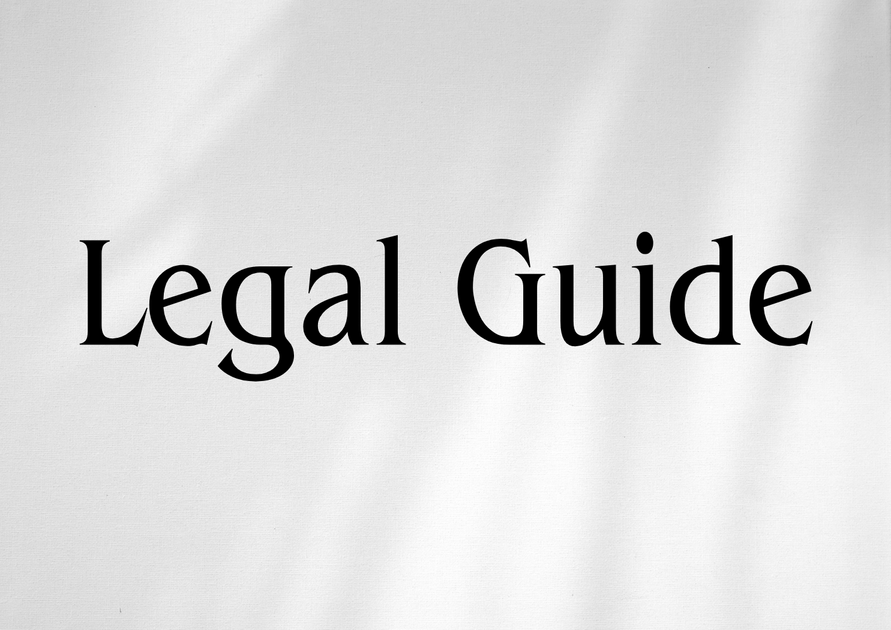Introduction
In the rapidly evolving landscape of Middle Eastern aviation and cross-border business, the legal framework governing airspace control and sovereignty stands as a critical linchpin for international enterprises, regional governments, and stakeholders operating in or with Qatar. Recent geopolitical shifts, including diplomatic reconciliations and developments within the Gulf Cooperation Council (GCC), have heightened the importance of understanding the nuances of airspace law—not only within Qatar but also across the UAE and its neighboring states. For UAE-based businesses and legal professionals, keeping abreast of Qatar’s airspace regulations is essential for ensuring compliance, negotiating opportunities, and mitigating transnational risks.
This article offers a detailed consultancy-grade analysis of Qatar’s airspace control and sovereignty regime. By referencing official Qatari legislation, international aviation treaties—including those administered by the International Civil Aviation Organization (ICAO)—and comparative insights from the UAE’s Federal Decrees and Cabinet Resolutions, this guide equips corporate executives, legal counsel, and compliance officers with the clarity required for high-stakes business decisions. Readers will find practical recommendations, compliance checklists, and risk analyses tailored to the realities of operating in a region where sovereignty, security, and strategic interests intersect at 35,000 feet and beyond.
Why is this topic significant for the UAE? With airspace control directly affecting aviation, logistics, energy, and executive mobility, the interplay between Qatari and UAE regulations bears direct consequences for all cross-border initiatives. The UAE’s ongoing legal reforms, including UAE Law 2025 updates, highlight how quickly regulatory landscapes can shift—and why comparative understanding is indispensable for robust legal strategy. This article also addresses how UAE-based corporations can future-proof their operations in view of recent legal updates, ensuring not just regional connectivity, but resilient legal compliance.
Table of Contents
- Airspace Legal Foundations in Qatar
- International Treaties and the Role of ICAO
- Core Provisions of Qatar’s Airspace Laws
- Comparative Analysis: Qatar vs UAE Airspace Regulations
- Implications for UAE Businesses and Aviation Entities
- Case Studies and Hypothetical Scenarios
- Risks of Non-Compliance and Penalties
- Compliance Strategies and Implementation Checklist
- Future Outlook: Legal Updates and Regional Trends
- Conclusion: Key Takeaways for UAE Stakeholders
Airspace Legal Foundations in Qatar
Understanding Sovereignty over Airspace
At the heart of any sovereign nation’s aviation legal system lies the principle of exclusive sovereignty over the airspace above its territory, as codified in Article 1 of the Convention on International Civil Aviation, 1944 (Chicago Convention). Qatar, a founding member of the ICAO and signatory to the Chicago Convention, reserves the full authority to regulate, permit, or restrict the entry and use of its airspace.
The primary legislative instruments governing airspace in Qatar include:
- Law No. 15 of 2002 Regarding Civil Aviation in Qatar
- Executive Regulations of Law No. 15 of 2002
- Relevant Ministerial Decisions and Qatar Civil Aviation Authority (QCAA) directives
This framework vests the State of Qatar and its Civil Aviation Authority with comprehensive regulatory, enforcement, and administrative powers over its national airspace—covering matters from flight permissions to security restrictions and aeronautical navigation.
Geographical Scope of Qatari Airspace Sovereignty
The sovereignty of Qatar extends vertically from its landmass and territorial waters up to the limits of outer space (as per customary international law, since no upper boundary is universally agreed, but generally accepted to be 100,000 km).
This includes:
- Territorial airspace (above land and territorial waters up to 12 nautical miles)
- Allocated Flight Information Regions (FIRs) as designated by ICAO and QCAA
- Special Use Airspace (e.g., military, restricted, and prohibited zones)
Unauthorized entry or overflight in any part of these zones triggers automatic application of Qatari airspace laws and, in some cases, criminal liability.
International Treaties and the Role of ICAO
The Chicago Convention and Bilateral Agreements
The Chicago Convention sets the global standards for aviation safety, navigation, and the legal jurisdiction of national airspace. Qatar has incorporated these obligations into its domestic law, shaping its airspace management policies in tandem with ICAO’s rules and recommended practices.
Qatar is also party to multiple bilateral Air Services Agreements (ASAs), including with the UAE, which define the terms for international flights, route allocation, and overflight permissions. These agreements are periodically negotiated and updated in response to diplomatic, economic, and security considerations.
Qatar Flight Information Region (FIR) Allocation
Historically, the Bahrain FIR encompassed most Qatari airspace. However, following recent diplomatic settlements and ICAO intervention (notably Assembly ICAO 40th Session, 2019), Qatar regained the authority to manage its own FIR, enhancing its sovereign regulatory reach and operational oversight. This transition carries direct legal and operational implications for UAE-based airlines and stakeholders transiting Qatari airspace.
Core Provisions of Qatar’s Airspace Laws
Key Articles of Law No. 15 of 2002 (Qatar Civil Aviation Law)
- Article 3: Declares Qatari sovereignty over the airspace above its territory.
- Article 4: Prohibits unauthorized aircraft entry and overflight, mandating prior permission from the QCAA.
- Article 21: Empowers the QCAA to deny or revoke flight permits in the interests of national security, public order, or international obligations.
- Article 58: Establishes the penalties for infringements, including fines, detention of aircraft, and criminal prosecution in severe cases.
Additional executive regulations clarify procedures for:
- Notification and application for overflight or landing permits
- Safety and security requirements for commercial operators
- Airspace classification and navigation
- Use of restricted, prohibited, and danger areas
Recent Amendments and Regulatory Updates
Post-2017 Gulf airspace embargoes and subsequent normalization (notably after the Al-Ula Declaration, 2021), Qatar enacted amendments tightening controls on access and enhancing coordination with the QCAA, offering renewed cross-border opportunities but necessitating attentive compliance from operators with UAE business connections.
Comparative Analysis: Qatar vs UAE Airspace Regulations
For UAE stakeholders, understanding both jurisdictions’ frameworks is vital for ensuring legal compliance, especially when planning cross-border flights or engaging in transnational transactions involving aviation or logistics.
Side-by-Side Comparison Table
| Regulatory Aspect | Qatar (Law No. 15/2002) | UAE (Federal Law No. 20/1991; 2025 Updates) |
|---|---|---|
| Sovereignty Announced | Article 3 affirms absolute sovereignty over airspace | Article 2 affirming, with detailed security zones (2025 expanded definitions) |
| Flight Permit Process | Mandatory QCAA pre-clearance; can be denied on broad grounds | GCAA (UAE) approval; New 2025 digital systems, stricter timelines |
| Penalties for Violation | Fines, aircraft detention, possible criminal charges (Article 58) | Fines, aircraft grounding, enhanced criminal liability (2025 increased fines) |
| Restricted/Prohibited Zones | Designated under QCAA circulars; often military or critical infrastructure | UAE Civil Military Airspace Use Policy; more defined zones (2025 digital mapping) |
| Appeal Mechanisms | Administrative review with QCAA; judicial challenge possible | Administrative appeal with GCAA; expedited judicial process (2025 reforms) |
Practical Consultancy Insights
- Flight Clearances: Given the tighter timeline and increased penalties in both jurisdictions, operators registered in the UAE or those with UAE-based investors must factor in dual compliance mechanisms when traversing Qatari airspace.
- Operational Risk: Business aviation, logistics, and drone sectors must conduct pre-flight due diligence against updated airspace maps and verify with both QCAA and UAE GCAA databases to avoid inadvertent breaches.
Implications for UAE Businesses and Aviation Entities
Navigating Permit Applications and Risk Mitigation
For airlines, charter operators, and logistical companies based in the UAE, the layered nature of Qatar’s and the UAE’s airspace rules necessitates robust compliance infrastructure. It is essential to:
- Appoint compliance officers with cross-jurisdictional expertise
- Implement automated tracking and notification systems for route updates
- Maintain real-time liaison with both QCAA and UAE GCAA officials
- Store and audit permit approval and flight plan records for at least 5 years (in line with best practice and insurance requirements)
In addition, businesses engaged in cross-border transactions (e.g., leasing, aircraft financing) should ensure contract terms explicitly address compliance with both Qatari and UAE airspace laws, including indemnification for fines arising from regulatory breaches.
Impact on Executive Mobility and Foreign Investment
Given Qatar’s strategic location as the host of major sporting events (e.g., FIFA World Cup 2022), legal certainty and reliability of access are crucial for executives and VIPs transiting through Doha and beyond. For UAE entities, reputational risks associated with even inadvertent airspace infractions are high, making corporate travel management a critical compliance function in itself.
Case Studies and Hypothetical Scenarios
Case Study 1: Overflight Violation by a UAE-Based Cargo Operator
Background: A Dubai-based logistics firm schedules a multi-stop cargo flight crossing Qatari airspace en route to Europe. A miscommunication leads to an expired QCAA overflight permit.
Outcome: Qatari authorities detain the aircraft, impose fines, and require the operator to submit enhanced due diligence documentation. Insurance rates increase for the following year, incurring indirect costs.
Lesson: Automated compliance checks and real-time regulatory liaison are essential to mitigate operational, financial, and reputational risks.
Case Study 2: Penalties for Drone Operations
Background: An Abu Dhabi-based AEC firm uses drones for site surveys near the Qatar border. Due to lack of updated mapping data, a drone inadvertently enters Qatari restricted airspace.
Outcome: Penalties under Article 58 of Qatari law, with possible suspension of import/export privileges for non-compliance with both UAE and Qatari frameworks.
Lesson: Entities must establish geo-fencing protocols, redundancy in real-time airspace updates, and joint QCAA-GCAA pre-clearance for sensitive projects.
Risks of Non-Compliance and Penalties
Legal Consequences under Qatari Law
Non-compliance with Qatari airspace regulations can result in:
- Fines ranging from QAR 50,000 to QAR 500,000 for civil violations
- Detention or impoundment of aircraft, with potential diplomatic repercussions
- Possible criminal prosecution for severe or deliberate infractions (e.g., unauthorized access to military zones)
- Blacklisting or refusal of future permits
These risks are amplified for UAE-based operators due to the high-profile nature of recent airspace disputes and the enhanced scrutiny post-2021 normalization.
Comparison Table: Penalties Under Old vs Current Laws
| Violation | Qatar Penalty (Pre-2020) | Qatar Penalty (2021-2024) | UAE Penalty (2025 Updates) |
|---|---|---|---|
| Unpermitted Overflight | QAR 25,000 fine, warning | QAR 50,000-QAR 250,000; possible aircraft detention | AED 100,000+ fine; criminal procedure expedited |
| Unauthorized Drone Entry | Minor fine, impoundment | Major fine, possible criminal charge, blacklisting | Summons, increased fines, potential jail (2025 update) |
| Breaching Military Zone | Case-by-case, minor fine | QAR 500,000+, criminal investigation | AED 500,000+, criminal/civil liability under new law |
Compliance Strategies and Implementation Checklist
Building Robust Airspace Compliance Systems
To avoid costly missteps, UAE companies operating in or near Qatar should institute the following best practices:
- Centralized Regulatory Monitoring: Dedicate a compliance team or consultant to track QCAA and UAE GCAA legal updates, including airspace NOTAMs (Notices to Airmen) and circulars.
- Automated Permit Management: Implement digital solutions for flight plan submission and real-time approval tracking—especially important with the UAE’s 2025 digital airspace reforms.
- Internal Training & SOPs: Regularly train aviation, logistics, and executive travel staff on both Qatari and UAE legal procedures for airspace use.
- Contractual Protections: Stipulate airspace compliance warranties and indemnities in all cross-border aviation, leasing, and charter agreements.
- Risk Assessments & Insurance: Align insurance coverage with updated penalty frameworks and ensure disclosure of recent regulatory infractions.
Compliance Checklist Table
| Compliance Item | Qatar | UAE |
|---|---|---|
| Overflight/Landing Permit | QCAA e-application, 72 hours+ in advance | GCAA e-system, 24-72 hours in advance (2025 update) |
| Airspace Mapping | Check QCAA updates weekly | Sync with GCAA digital maps (2025 reforms) |
| Staff Training | Annual QCAA-compliance module | Annual GCAA-compliance and 2025 update training |
Suggested Visual Placement:
- Penalty Comparison Chart: Illustrate escalating fines and enforcement rigor pre-/post-2020 for rapid risk appraisal.
- Compliance Process Flow Diagram: Map a step-by-step route approval process for both Qatari and UAE frameworks, aiding executive decision-makers.
Future Outlook: Legal Updates and Regional Trends
Anticipated Developments in Qatar and UAE Airspace Laws
As the region continues to integrate aviation technology—such as unmanned aircraft, autonomous navigation, and advanced airspace monitoring—both Qatari and UAE authorities are moving rapidly toward legal modernization.
- Qatar: Expected adoption of dynamic FIR allocation and enhanced usage of e-permits; possible introduction of remote pilot licensing schemes.
- UAE (per Federal Decree UAE 2025 updates): Deployment of AI-based airspace monitoring, digital mapping for all airspace categories, and expanded compliance enforcement powers.
This trend signals stricter scrutiny, segmented airspace management, and growing alignment with global aviation standards. For UAE corporations, proactive investment in legal compliance, digital infrastructure, and upskilling will not only avoid penalties but also unlock new commercial opportunities as cross-border airspace regimes harmonize.
Conclusion: Key Takeaways for UAE Stakeholders
The legal regime governing airspace control and sovereignty in Qatar is a cornerstone of the region’s geopolitical stability, economic vitality, and aviation safety. As this article has illustrated, compliance is achievable with the right systems, contracts, and advisory support in place—yet the costs of failure are substantial.
- Qatar’s legislative framework, driven by Law No. 15 of 2002 and QCAA directives, provides robust state control and recently intensified enforcement powers.
- Comparative insights with the UAE’s 2025 legal updates show a convergence toward stricter, digitized, and more transparent compliance environments.
- For UAE stakeholders, effective risk management hinges on cross-jurisdiction legal awareness, technology adoption, and ongoing staff training.
Legal professionals and business leaders in the UAE should treat airspace compliance as an executive priority, embedding these practices into broader corporate governance and operational resilience strategies. As regulatory frameworks evolve in both Qatar and the UAE, continuous monitoring, professional training, and expert legal consultancy will remain indispensable for successful, lawful operations across the skies.




